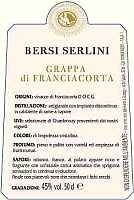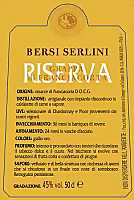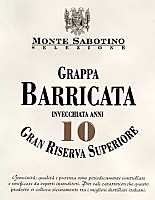
Wine Culture and Information since 2002 - Volume 22
 Wine Culture and Information since 2002 - Volume 22 |
|
KefirKefir is a natural beverage, coming from the Caucasus region, made of milk or water, with a pleasing consistency and a sour and slightly sparkling taste |
|
Kefir is one of the most ancient beverages known and which are still common today. Its production is based on the product of the fermentation done by a complex of yeasts and bacteria. There are two types of kefir: water kefir (or kefir d'acqua) and milk kefir. The difference is substantially represented by the type of “base food” used for the proliferation of the colony of bacteria. The term “kefir” seems to come from the Armenian word keif, which means “wellness”.
|
|
Kefir is a beverage made of fermented milk, similar to yogurt, and it is believed to come from Russia and Caucasus. It certainly is one of the most ancient lactic cultures as well as rich in legends. The products derived from the fermentation of milk have been part of human nutrition since remote times: they are mentioned in the Bible, in the Genesis it is mentioned the use of fermented milk, in the Deuteronomy it is mentioned by Moses, and it is also mentioned in the biography of Roman emperor Eliogabolo (204-222 A.D.). In the “One Thousand and One Nights” novel it is mentioned as an integral part of Arabian cooking. It was already known at the court of Gengis Khan and it is also mentioned in the chronicles of Crusaders. According to the legend, the first mountain dwellers of Caucasus received as a gift the first kefir grains from Muhammad, for this reason kefir grains are also known as “millet of the prophet”.
At the times of Renaissance, the king of France was healed from an bowel infection by an oriental personage who used, as a remedy, fermented ship milk. After the healing of the king, this kind of products will become more and more popular. Another important date for fermented milk was 1964, when some American researchers began the study of nutritional habits of African tribes. By observing the nutritional habits of the Maasai tribe, they noticed, although they almost made an exclusive use of meat and milk, their level of cholesterol was surprisingly low. Their diet seemed to contradict their level of cholesterol. By carefully examining the nutritional habits of Maasai Mara and Serengeti inhabitants, they discovered they made an abundant use of fermented milk, where the fermentative process favored the accumulation of a metabolite with hypocholesterolemic effects. Also studies done by the Catholic University of Piacenza confirmed the daily intake of kefir, in hypercholesterolemic subjects, contributes to lower the level of cholesterol.
|
||||||||
|
Whenever the fermented milk subject is mentioned, either yogurt or kefir, it is impossible not to remember Ilya Ilyich Mechnikov - the famous Russian microbiologist who lived between the 1800s and 1900s, who received the Nobel prize in medicine in 1908 for his work on phagocytosis - who was continuously attracted by the longevity of people who made habitual use of kefir or yogurt. He was one of the first scientists who studied the fermentation of milk, and he was the first one to successfully isolate “Lactobacillus Bulgaricus”, one of the bacteria responsible for the fermentation of milk. Mechnikov supported the idea good bowel fermentation, in favor of putrefactive ones, were beneficial to the health of the organism. In 1906, in France, the “Le Ferment” firm began the commercialization of a product made of lactic ferments isolated by Mechnikov, also involving the Spanish businessman Isaac Carasso in the business, in order to start the industrial production of products made of fermented milk. For a long time, it was believed impossible to create a culture of kefir grains. Recently, some scientific studies have proven it is possible to create kefir grains by using a sack of goat leather filled with pasteurized ship milk to which it is added the bacterial flora of ship's bowel. The process is long and laborious: the milk must be kept at a temperature of 35° C for 48 hours and stirred every hour. After 48 hours, three quarters of the milk is drawn off and replaced with new pasteurized milk. The operation is repeated for 12 weeks and at the end, in the leather sack should be found kefir grains. As opposed to yogurt, it is not possible to make kefir by using the beverage, that is the finished product. Kefir probably derives from the production of a sour and foamy beverage typical in the Caucasus - ayran - consumed still today in this region, prepared with yogurt, water and a pinch of salt: it is a perfect thirst quencher and an excellent matching for kebab. In past times, ayran was produced by fermenting the milk in wood containers and by adding a lamb or mutton shin. The preparation of kefir was very important to the mountaineers living the North part of Caucasus and the preparation technique was considered a family heritage. To strengthen this consideration there also was a legend which believed it was Muhammad to give kefir grains to orthodox people and to teach them how to make and keep it. This knowledge was kept secret for many centuries, otherwise - according to the legend - in case foreigners knew the secrets of the preparation of kefir, it would have lost any “strength”. To support the legend were also the stories of the neighboring people who were used to talk about a secret magic beverage made by the Northern people. Marco Polo, by describing his passage in the Caucasus region, mentioned a beverage made with milk and similar to white wine, called “chemmisi”. At the end of the nineteenth century, they began to scientifically study kefir. It was believed to be a cure for some diseases, such as tuberculosis, and some disorders of the stomach and bowel. It was believed by the most illustrious scientists the regular consumption of kefir prevented aging. The impossibility of making kefir without having grains, prevented the development of industries for mass production. In 1908, thanks to the dodge of Blandov brothers, a stratagem and a beautiful girl - Irina Sakharova - Russians were successful in getting kefir grains, to bring them in Moscow and to start the production and commercialization of kefir. From this moment on, kefir, thanks to its qualities, began to spread all over Russia. In 1973 Irina Sakharova received a letter of encomium from the Russian Minister of Food Industry. Kefir is produced industrially in Russia, Sweden, Norway, Finland, Denmark, Poland, Hungary, Czech Republic, Switzerland, France, Germany, United States, Canada, Japan and Australia. In pretty recent times, kefir is getting more and more popular in Italy as well.
|
||||
|
Indispensable for the preparation of kefir are the grains, that is a culture of bacteria capable of doing the fermentation process. To get them is pretty easy: they can be taken from a precious preparation, can be asked to someone who habitually make kefir, or they can also be bought in pharmacy, in herb shops or importers of products from the former Soviet Union. In pharmacy are usually available two types, one for milk and another for fruit kefir, commonly known as water kefir, or kefir d'acqua. The preparation of water kefir needs two liters of plain water, 2 dried figs from organic culture (or 2 prunes), half lemon, 4 or 5 spoonfuls of sugar, 5 or 6 spoonfuls of kefir grains. Pour the water in a glass container, add kefir grains and all the other ingredients, then gently stir the mixture and keep at a room temperature. The container must not be hermetically sealed, because the fermentation produces carbon dioxide. After 12 hours, the mixture will be stirred again and after a time from 24 to 72 hours, according to taste, squeeze the lemon, remove the figs and filter the beverage with a strainer. What it is obtained is water kefir, ready to drink and which can be kept in the fridge. The grains retrieved from the filtering operation must be rinsed in water - possibly with no chlorine - and reused for the preparation of new kefir. The culture in excess, which grows after every production, can be used as a fertilizer or kept in a solution of water and sugar. Water kefir fermented for 24 hours has a laxative effects, because of the high content in sugar, whereas the one fermented for more than 48 hours has an astringent effect because of its sour taste. For the preparation of milk kefir it is required a glass contained, kefir grains and milk. It can be used any type of milk, including pasteurized milk or UHT milk. In case it is wished the use fresh milk, it should be remembered, before its use, it must be heated at a temperature of 70° C and then allowed to cool down at room temperature. Put the kefir grains in the container, then pour the milk, by making sure the whole culture is fully covered by milk. It is not recommended to use skimmed milk because it lacks of nutritional elements essential for the culture of kefir grains. The optimal temperature should be about 20° C. After 24 hours - or 48 or 72 hours, according to taste - the grains will be removed from the milk by using a strainer. The kefir so obtained must be kept in the fridge, whereas the grains can be reused for the preparation of new kefir. It is recommended to drink at least one glass of kefir a day, in order to benefit of the effects of the bowel flora on the body. Kefir must always be consumed fresh, as it is a beverage that can easily get spoiled. During the preparation of kefir it is very important to pay attention to hygiene. In home environment it is recommended not to prolong fermentation for more than 72 hours, in order to avoid bacterial spoilage. In sterile environment the fermentation can also be prolonged for a maximum of ten days. Kefir is recommended to all subjects observing an antibiotic treatment and in all cases in which bowel flora is weakened. The complex of yeasts and bacteria of kefir, contribute to the proper balance of bowel ecosystem, while increasing efficiency and resistance against infections. Scientific studies seem to confirm the hypothesis about the regular consumption of kefir stimulates the immunitary response of body. Kefir is a food permitted to anyone having intolerance towards lactose. The main beneficial action of kefir on the bowel is to avoid the putrefaction of the substances digested by the stomach. The beneficial effect of water kefir seems to be higher than milk kefir, however its taste could not meet western preferences. The culture of kefir grains is a complex micro flora mainly composed by: yeasts, Lactobacillus Casei, Lactobacillus Brevis, Lactobacillus Desidiosus, Lactobacillus Acidophilus, Lactobacillus Casei var. Rhamnosus, Lactobacillus Kefiri, Lactococcus Lactis var. Lactis, Saccaromyces Lactis, Acetobacter Aceti, Candida Kefir, Saccharomyces Delbrueckii, Streptococcus Lactis, Streptococcus Thermophilus, Streptococcus Bulgaricus, different types of enzymes, ethyl alcohol (with a maximum volume of 7%), propionic bacteria. One hundred grams of kefir contains: 3.2 grams of fats, 2.9 grams of proteins, 3.6 grams of carbohydrates, vitamins B, E, K, C and D, essential aminoacids, mineral substances such as calcium and magnesium. The home environment, no matter how clean it is, is never aseptic. Bacterial cultures - such as kefir - are subjected to contamination, therefore it is a good habit to periodically replace the culture of kefir grains in order to prevent detrimental bacterial degeneration harmful for health.
|
AquavitaeReview of Grappa, Distillates and Brandy |
|
|
| Distillates are rated according to DiWineTaste's evaluation method. Please see score legend in the "Wines of the Month" section. |

|
|
Grappa di Franciacorta |
|
| Bersi Serlini (Lombardy, Italy) | |
| (Distiller: Distillerie Peroni) | |
| Raw matter: Pomace of Franciacorta DOCG | |
| Price: € 20.00 - 50cl | Score: |
| This grappa is colorless, limpid and crystalline. The nose denotes intense, clean, pleasing and refined aromas of banana, apple, plum, licorice and hazelnut with almost imperceptible alcohol pungency. In the mouth has intense flavors with perceptible alcohol pungency which tends to dissolve rapidly, good correspondence to the nose, balanced sweetness, agreeable. The finish is persistent with flavors of banana, plum and hazelnut. This grappa is produced with discontinuous steam operated alembic still. Alcohol 45%. | |

|
|
Grappa di Franciacorta Riserva |
|
| Bersi Serlini (Lombardy, Italy) | |
| (Distiller: Distillerie Peroni) | |
| Raw matter: Pomace of Franciacorta DOCG | |
| Price: € 24.00 - 50cl | Score: |
| This grappa shows a pale amber yellow color, limpid and crystalline. The nose denotes intense, clean, pleasing and refined aromas of tobacco, leather, vanilla, hazelnut, dried fig, honey, plum jam and chocolate with almost imperceptible alcohol pungency. In the mouth has intense flavors with perceptible alcohol pungency which tends to dissolve rapidly, good correspondence to the nose, balanced sweetness, pleasing roundness. The finish is persistent with flavors of honey, hazelnut and plum jam. This grappa is produced with discontinuous steam operated alembic still and ages for 36 months in barrique followed by 24 months of aging in steel tanks. Alcohol 45%. | |

|
|
Distillato di Malvasia |
|
| Il Montù (Lombardy, Italy) | |
| Raw matter: Malvasia Grapes | |
| Price: € 24.50 - 70cl | Score: |
| This grape brandy is colorless, limpid and crystalline. The nose denotes intense, clean, pleasing and refined aromas of grape, pear, apple, peach, apricot and hints of anise with imperceptible alcohol pungency. In the mouth has intense flavors with perceptible alcohol pungency that tends to dissolve rapidly, good correspondence to the nose, balanced sweetness, pleasing roundness. The finish is persistent with flavors of grape, pear and apricot. This distillate is produced with a discontinuous bainmarie alembic still. Alcohol 42%. | |

|
|
Grappa di Prosecco |
|
| Distilleria Zanin (Veneto, Italy) | |
| Raw matter: Pomace of Prosecco | |
| Price: € 10.00 - 70cl | Score: |
| This grappa is colorless, limpid and crystalline. The nose denotes intense, clean, pleasing and refined aromas of pear, apple, wistaria, hazelnut and peach with almost imperceptible alcohol pungency. In the mouth has intense flavors with perceptible alcohol pungency which tends to dissolve rapidly, good correspondence to the nose, balanced sweetness, agreeable. The finish is persistent with flavors of pear, peach and hazelnut. This grappa is distilled in discontinuous alembic still. Alcohol 40%. | |

|
|
Grappa Barricata 10 Anni Monte Sabotino |
|
| Distilleria Zanin (Veneto, Italy) | |
| Raw matter: Pomace of Grapes from Veneto | |
| Price: € 30.00 - 70cl | Score: |
| This grappa shows a pale golden yellow color, limpid and crystalline. The nose reveals intense, clean, pleasing, refined and elegant aromas of black cherry, blackberry, vanilla, tobacco, chocolate, honey, hazelnut, prune and licorice with almost imperceptible alcohol pungency. In the mouth has intense flavors with perceptible alcohol pungency that tends to dissolve rapidly, good correspondence to the nose, balanced sweetness, agreeable roundness. The finish is persistent with flavors of prune, honey, chocolate and licorice. This grappa is distilled with a discontinuous alembic still and ages for ten years in cask followed by an aging in barrique. Alcohol 40%. | |
Wine Parade |
|
|
| The best 15 wines according to DiWineTaste's readers. To express your best three wines send us an E-mail or fill in the form available at our WEB site. |
| Rank | Wine, Producer | |
|---|---|---|
| 1 |
| Chianti Classico Riserva Novecento 2000, Dievole (Italy) |
| 2 |
| Nero al Tondo 2001, Ruffino (Italy) |
| 3 |
| Wine Obsession 2001, Vignamaggio (Italy) |
| 4 |
| Amarone della Valpolicella Classico 2000, Zenato (Italy) |
| 5 |
| Don Antonio 2003, Morgante (Italy) |
| 6 |
| Sagrantino di Montefalco Collepiano 2003, Arnaldo Caprai (Italy) |
| 7 |
| Brunello di Montalcino 1999, Castello Banfi (Italy) |
| 8 |
| Amarone della Valpolicella Classico Costasera 2001, Masi (Italy) |
| 9 |
| Soave Classico Monte Alto 2004, Ca' Rugate (Italy) |
| 10 |
| Notarpanaro 1999, Taurino (Italy) |
| 11 |
| Sforzato di Valtellina Canua 2001, Conti Sertoli Salis (Italy) |
| 12 |
| Sagrantino di Montefalco 2003, Antonelli (Italy) |
| 13 |
| Colli Orientali del Friuli Rosazzo Bianco Terre Alte 2002, Livio Felluga (Italy) |
| 14 |
| Barolo Cannubi Boschis 2001, Sandrone (Italy) |
| 15 |
| Barolo Bussia 2001, Prunotto (Italy) |
|
||||||||
|
DiWineTaste Polls
|
| |||||||
Privacy Policy | |||||||


| Copyright © 2002-2024 Antonello Biancalana, DiWineTaste - All rights reserved |
| All rights reserved under international copyright conventions. No part of this publication and of this WEB site may be
reproduced or utilized in any form or by any means, electronic or mechanical, without permission in writing from DiWineTaste. |